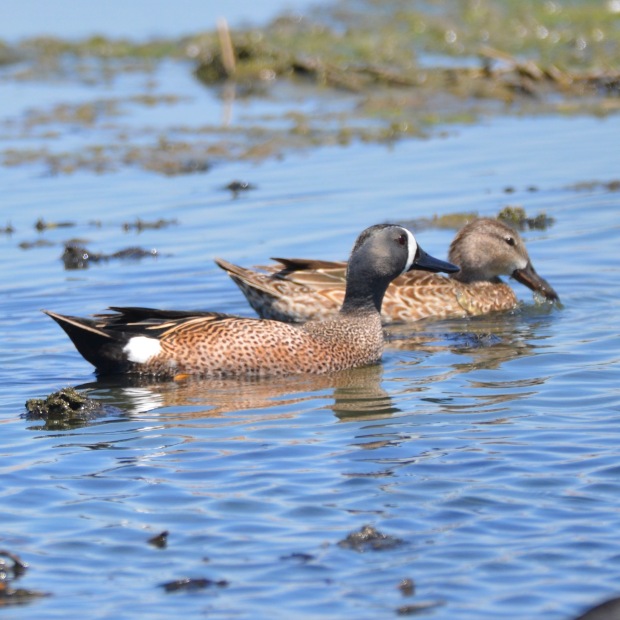Hornsby Bend Observatory: An Austin Birding Hotspot
Yes, I hang around sewage facilities with binoculars.
You already know that my husband dragged me to a landfill on our honeymoon in Mexico so we could find the Lesser Yellow-headed Vulture. My guy is so full of romance, isn’t he? So, being wisked off to a sewage treatment center as we began our Texas Birding Roadtrip a few weeks ago should come as no surprise to me. Or to you.
It’s obvious why birds love landfills. There’s an endless buffet of food that we throw into our trash cans at home and these non discriminating birds are ready to dive in and gorge. If you’ve got the nose that can withstand the attack of foul-smelling broccoli, chicken and who knows what else, you’ll find loads of birds dining on the big pile of garbage.
As for sewage treatment facilities birds love them because of the ponds found there. The water in these ponds is clean and an important part of the process of separating water and solids during the sewage treatments. All of that “process” happens in nearby buildings, so you don’t see any of that. What you end up with, though, is a rather pristine setting that attracts migrating shorebirds and wintering waterfowl. And that’s what you get at Hornsby Bend Observatory. This 1200 acre site is at the southeast end of Austin, Texas—near the Austin-Bergstrom Airport—and part of the Austin Water Utility’s Center for Environmental Research at the Hornsby Bend Biosolids Management Plant (fancy name for sewage treament facility).

Blue-winged Teal (male and female)
The water effluent coming out of the sewage treatment plant is super-charged with nutrients. When the effluent is released into the ponds, these nutrients result in algae blooms and the population explosion of critters that feed on the algae. This is what attracts the birds. The abundance of invertebrates in a sewage pond is 10-50 times greater than that of a normal pond.

American Coot foraging for critters in the algae.

Of course we hang out at sewage treatment centers. Don’t you?

Kildeer

Least Sandpiper

Lesser Yellowlegs and Least Sandpiper
The birds also share the sewage ponds with an abundance of turtles, of various species. On a sunny day you’ll find them sunning themselves.

Red-Eared Slider
Beginning in late March you’ll begin to see the Scissor-tailed flycatchers that seem to be all over the place, perching on nearby power lines. This guy was my FOY (first of year) sighting during our visit in early April.

Scissor-tailed Flycatcher

Northern Shoveler

More sliders basking in the sun.

Black-necked Stilt
When you arrive, you’ll stop at the entrance hut and just let the staff know that you’re there to go birding. They typically wave you through with a smile. Traffic is one direction, so be sure to pay attention to the signs. There is also a bird blind but you’ll find that the birds don’t really mind that you’re there.
For more information on Hornsby Bend Observatory:
- Hornsby Bend Observatory website (Useful information, though hasn’t been updated in some time.)
- Center for Environmental Research
- The Natural History of an Urban Wasteland: Hornsby Bend
Depending on the day and direction of the wind, it could be a little stinky at Hornsby Bend Observatory. But trust me, nothing is as stinky as a landfill on your honeymoon.

The tail on the scissor tailed fly catcher was very impressive.
LikeLike
Pingback: Miracles and the best auction I ever lost | The Accidental Birder